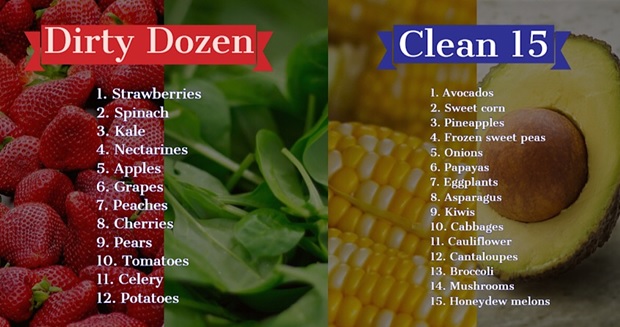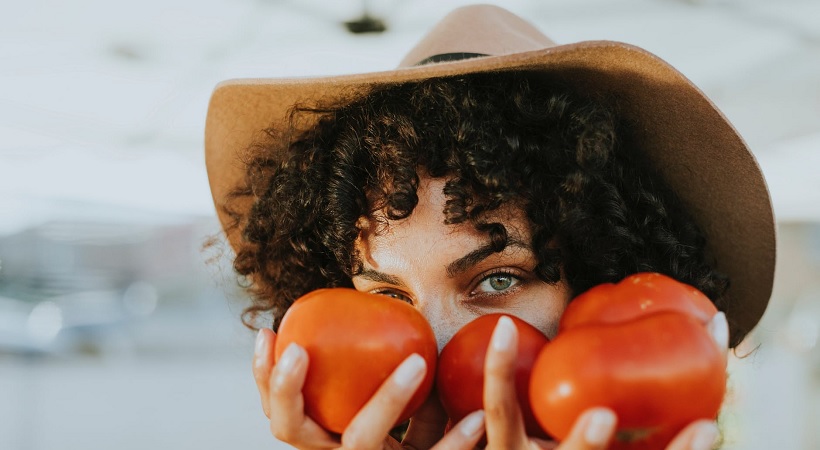Body
How Can I Afford to Eat Organic?
Buy seasonal, join a co-op.
By Roni Deluz ND, RN, Ph.D
Many of my clients complain that they want to eat foods with fewer pesticides, hormones and antibiotics in them, but they can’t afford them. “You have to be rich to eat organic,” they complain.
Organic foods are more expensive to grow and aren’t subsidized by the government like conventional foods are. According to Consumer Reports (CR) organic items cost, on average, 25% up to 50% more. Fortunately, there are ways to reduce your exposure to these dangerous substances without turning your pockets inside out. The following guidelines, developed by CR, can help you identify when buying organic is smart and when you can save your coins.
What foods should you buy that are organic? Apples, bell peppers, celery, tomatoes, cucumbers, spinach, blueberries, grapes, nectarines, peaches, potatoes and strawberries. These 12 foods are called the Dirty Dozen. I have added 3 more fruit to the list such as, cherries, pears and red raspberries. It is also best to buy organic meat, poultry, eggs, dairy products and baby food. According to the Environmental Working Group (EWG), constant exposure to small doses of pesticide can build up in the body and cause chronic illness.
What does, buy organic mean anyway? The definition of buying organic meat, poultry, eggs or dairy; is that it comes from animals that are given no antibiotic, growth hormones or steroids. Organic food is produced without using toxic synthetic ingredients, fertilizers and pesticides. These foods are not genetically modified. In many instances organic food also means food without being exposed to radiation. Many people are surprised by the strict standards of how an animal is considered organic. These animals, often referred to as free range and grass fed or free roaming, not only are hormone and pesticide free, but also spend time outside getting sun and do not live in crowded spaces.
Foods you do not necessarily have to buy organic are asparagus, avocados, bananas, broccoli, cauliflower, cabbage, kiwi, mangos, onions, papaya, pineapples, frozen peas (sweet); breads, oils, pasta, cereals and other packaged foods like frozen and canned fruits and vegetables. These foods have been tested to have less pesticide and less toxic. When avocados were tested for example, it was found to have less than 1% pesticide. Pineapples had less than 1% pesticides. Conventional onions had less than 10% pesticides.

Does washing my produce get rid of pesticides? Washing your fruits and vegetables when you bring them home from the market is always a good idea. In addition to removing dirt and debris, you’re also reducing your risk of catching E. coli or a virus from the produce picker’s dirty hands. But when it comes to removing pesticides, washing is not good enough. It may reduce some pesticide residue that is on the surface, but it does not wash away pesticides specifically designed to bind to the surface of the plant, nor does it reduce the amount of pesticide that’s been absorbed into the plant itself.
According to the Environmental Working Group (EWG) a team of scientists, engineers, policy experts, lawyers, computer programmers and other professionals that conduct independent environmental investigations, peeling produce may reduce your exposure, but also reduce your nutrients. So always wash your produce, but also begin to incorporate more organic foods into your diet.
We all must make healthy decisions about food. We must not assume that organic is just for the rich, that’s a misconception. More and more Americans are buying organic because they are more health conscious, so they look for ways to afford it.
How to buy affordable organic foods?
1. Just because its organic does not mean it’s a healthy food. If you are going to pay more for organic, make sure it’s healthy. This will decrease your expenses for healthier choices.
2. Buy seasonal food, its much cheaper. There are resources to help you to determine what foods are in season. Go to this website for example, Sustainabletable.org, put in your zip code to find out what foods are in season.
3. Join a community co-op or local farmers market. Joining a cooperative is not only fun, but you are a buyer, member and share profits at the same time as receiving discounts. Your local farmer is available and less expensive than large commercial stores on many occasions, but not in all communities.
For more information or to contact me with questions, go to www.drronideluz.com.











This was very informative.
Thank you so much for this information it was much appreciated.
Hi!
We appreciate your including our Seasonal Food Guide tool! For a direct link, go to seasonalfoodguide.org
Your readers can also find more information about organic agriculture at https://foodprint.org/issues/organic-agriculture/
and organic labels at https://foodprint.org/eating-sustainably/food-label-guide/food-label-guide-produce/usda-organic-produce/
Thanks,
FoodPrint.org
I would love to be on the Steve Harvey. Mr. Harvey has been an inspiration to me while wat8his shows. I thank you, Mr. Steve Harvey.
Valerie Henry